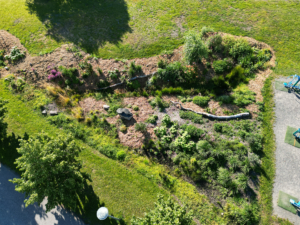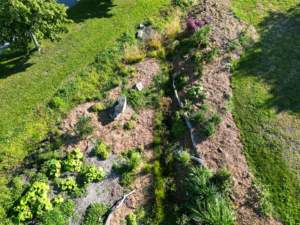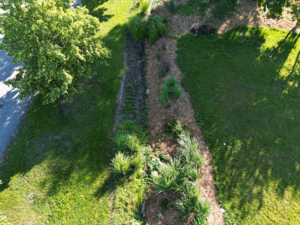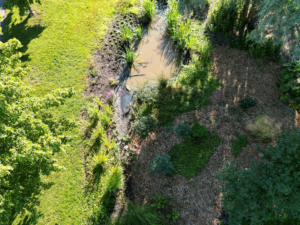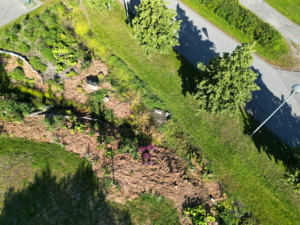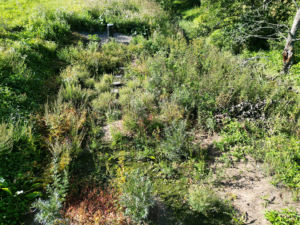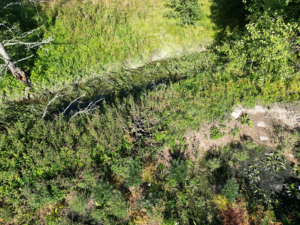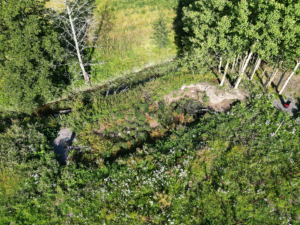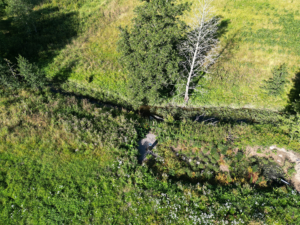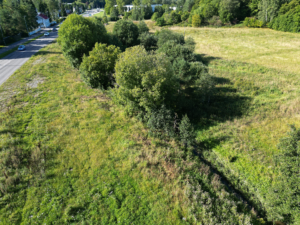Pilot sites
Here we provide information regarding ISMO’s pilot sites and implemented case studies.
The Kupittaa park rain garden collects stormwater from surrounding areas and utilizes a wide-open channel and vegetation to detain, infiltrate & evapotranspirate this stormwater.
Stormwater describes rainwater that cannot infiltrate or remain on the ground where it falls but creates surface runoff. Nature-based solutions (NBS), like rain gardens, bring multiple benefits to urban environments. NBSs help to mitigate urban stormwater floods & heat island effect, provide a source of water during dry summers, provide habitats for pollinators & insects, and creates esthetical diversity in urban environment.
In Kupittaa park an old lawn covered open depression was converted to a vegetated rain garden. Naturally wet and moist areas can be utilized in cost-effective way to create environmentally and socially more diverse urban environment while reducing costs related to managing rainwater in cities.
The bioretention basin in Länsikeskus, Turku was constructed at the beginning of December 2021 and the vegetation was planted in May 2022.
A bioretention basin is one type of “nature-based solutions” and its main purpose at Länsikeskus is to treat stormwater, that is rainwater running off from the ground surface, prior to discharge to the Kuninkoja stream. Nature-based solutions (NBS) are engineered structures that utilize natural processes to treat water while also providing green space for animals and insects, and human wellbeing.
A bioretention basin utilizes filter media and plants in the treatment processes. The treatment structure is placed alongside the largest urban stream Kuninkoja near the earlier outlet of the stormwater pipeline. The stormwater pipe was connected to an inlet sampling well, from which the stormwater flow is directed to the bioretention basin. Once the stormwater has passed through the filter media, it is collected in the drainage layer.
Before discharging to the Kuninkoja brook the filtered stormwater is directed to the outlet sampling well. Sampling wells are equipped with continuous discharge monitoring sensors and water quality samples are taken during major flow events. This monitoring helps to better understand the efficiency of the system under different weather conditions.

